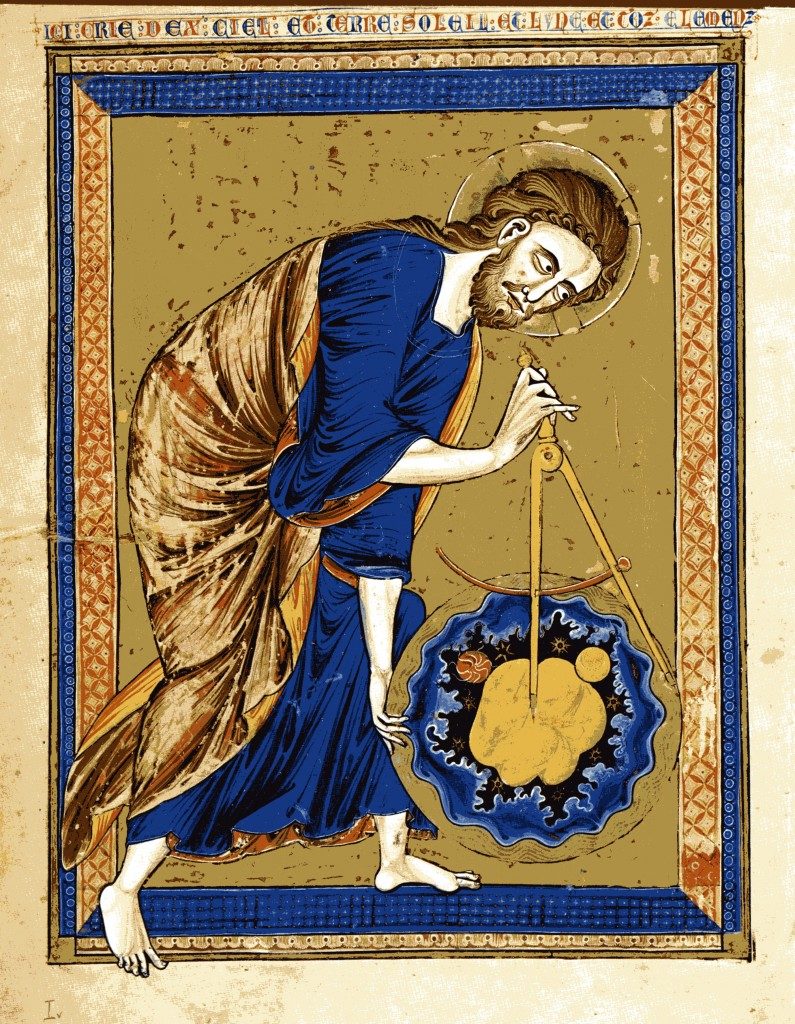
We live with a great cosmic work of art, and we have been invited to be co-creators in God’s masterpiece. In the way that Shakespeare would partner with an actor in order to great a unique performance of theatrical art, so God invites us to partner with him in the unfolding of his divine drama, adding our own emphases and developments, sharing through Christ in the divine life and the divine work of artistic creation.
From the cave art of pre-historic France to the graffiti of urban America, art has always been an indicator of human presence. No other animal makes art; all creatures mate and reproduce, birds make their beds, and muskrats build their houses, and every animal finds its own food, but only humans have the freedom and rationality necessary to make art. No instinct dictates what a human dwelling will look like; we must choose its form; we must create! And everything we do in this world will either contribute to or damage the goodness and beauty of God’s divine handiwork.
Together with language and tool-making, art is the primary embodiment of the Imago Dei. Archaeologists search for traces of humanity by looking for tools and art. We can make good art or we can make bad art, but we must make art. As aesthetic philosopher Dyrness explains, “A fool may run afoul of this order, but he cannot overthrow it.”[1] Even if all we made was speech, still our language is inherently symbolic and therefore aesthetic. We take the things of this world and symbolize them through our abstracted words; we join these words to make new meanings. Humans are makers and everything we make possesses an aesthetic dimension. Homo artifex. We must sleep; we must eat; we must think; we must make.
Thus art will be part of the way in which we promote healing and wholeness, both as individuals and as communities. We must not only speak to one another in words, we must also speak to one another through art, for through art we are able to understand one another on deeper levels. We can better imagine the experience and perspectives of others when we hear their stories and see the world as they see it through their visual art. In this way, art helps us overcome the isolating, fragmenting effect of the fall by helping us reconnect and more deeply commune with one another.
We live at a time when the use of visually-based media is exploding. There is no way to deny that our culture is shifting from word-dominated media to visually dominated media and that this will change the way we think about the world. This shift opens up exciting opportunities for Christians and for artists. An increased sensitivity to imagery can help us recover a more whole, life-giving understanding of our faith. We are not saved by rational assent to correct doctrinal propositions. We are saved by entrusting one’s entire being to the person of Jesus Christ. Christ asks for us to love him with our heart, mind, soul, and strength. Art can help us understand more truly what our doctrines actually mean, and art can help us experience that meaning as beautiful and desirable.
In Dyrness’s overview of the history of Christian art, we see that art has always helped Christians to better comprehend and express the meaning of their faith. From the imperial imagery of the Constantinian era which helped Christians proclaim that “Christ challenges not only the power of the emperor but that of all other mediators of spiritual power,”[2] to the iconography of the east which embodied the truth that in Christ’s incarnation, our art helps us understand what it means to be given direct access to the life of God.
Our modern focus on the word to the exclusion of the image had begun to distort and dehumanize our understanding of the Gospel. Dyrness argues that “it is clear … that our modern error is at least in part an aesthetic one: We no longer understand the role beauty ought to play in our fragmented lives.”[3] The present recovery of image and art has the potential to heal and deepen and re-humanize our faith. Art can help us not only believe facts about Christ, it can help us long for Him; to desire His work in our lives; and to ignite sincere, joyful worship. Truth attracts the mind, goodness attracts the will, and beauty attracts the heart.
[1]William Dyrness, Visual Faith (Grand Rapids: Baker Academic, 2001), 80.
[2]Ibid., 29.
[3]Ibid., 81.